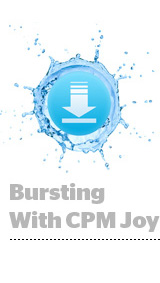 Movies have trailers, so why shouldn’t apps?
Movies have trailers, so why shouldn’t apps?
That’s the thinking behind the playable ad unit from Voxel. But the app monetization startup, which works with King.com, Electronic Arts and GSN, takes it one step further.
“It’s not just a trailer, it’s a completely interactive experience,” said Voxel CEO and co-founder David Zhao. “Whatever you can do with the app itself, you can do in the embedded ad.”
Rather than the usual app install ad experience – an ad that, without warning, plucks users out of whatever app they happen to be in and unceremoniously drops them into the app store – the playable unit allows users to experience a fully interactive 30- to 60-second in-app demo before being prompted to install the new offering. Developers just need to upload their existing app, and Voxel uses it to create the playable ad.
According to Zhao, the unit produces a higher-quality prospect, aka somebody with actual intent to install, rather than someone who’s either installing your app by mistake or without full knowledge of what the heck it even is or does.
Developers who use the unit are starting to see results, among them Addiktive Games, the mid-size game studio behind casual titles like Bubble Breaker 2.0, Bubble Shooter 3.0 (both self-explanatory) and Babbo’s Barrels (a game in which Babbo the pirate has to bust all of his, um, barrel bubbles before they sink his boat).
Addiktive’s digital marketing director Brandon Leong said he’s seen conversion rates between 120% and 125% higher with the playable unit than the usual results garnered from run-of-the-mill static interstitials, and CPMs that are 200% to 300% higher than other ads units, including banners.
But the cherry on top is lifetime value. Leong said Addiktive has noted a 60% to 80% higher retention rate from Voxel ad traffic when compared to other promotions the company has run in the past.
“Static interstitials were getting higher CPMs than banner ads, but for us it wasn’t high enough to risk being obtrusive to the user,” said Leong, noting that Addiktive spends a lot of time optimizing its in-app purchasing mechanisms. But these monetization strategies are a secondary priority. The first imperative is acquisition, and that’s getting more and more difficult with banner ads, which Leong said are “basically invisible to users by this point.”
 If banner ads and other static ad formats are invisible and increasingly less effective, then it makes sense that they lead to what Voxel’s Zhao refers to as “blind installs.” If a user taps a banner ad and downloads an app without any real idea of what the app is about, it’s fairly likely that person will either immediately delete the app or let it languish in the graveyard of other unused apps that get downloaded and then summarily ignored.
If banner ads and other static ad formats are invisible and increasingly less effective, then it makes sense that they lead to what Voxel’s Zhao refers to as “blind installs.” If a user taps a banner ad and downloads an app without any real idea of what the app is about, it’s fairly likely that person will either immediately delete the app or let it languish in the graveyard of other unused apps that get downloaded and then summarily ignored.
According to Localytics, about 20% of apps are used only once and then never again, which Zhao theorizes is because people are blindly downloading apps they have no true interest in.
“Based on data from our partners, we’ve seen that static ads have about a 3% to 5% conversion rate, which means a really high attrition rate,” Zhao said. “Blind installs create a problem for advertisers, especially in gaming where apps often monetize directly through in-app purchases. Developers have a formula when it costs to the cost of acquiring users: The cost to acquire must be lower than how much it will cost to monetize that user. If the acquisition cost is too high, the developer might not be able to monetize back on a lifetime value basis.”
It’s why Zhao said volume doesn’t work anymore. Blasting users with static advertising is untenable in the long run.
“Ad networks often subscribe to the idea that if you send more people to the store, that equals more downloads,” he said. “If you only get paid when a user installs something, then that concept is generally correct, but many times clicks aren’t even intentional. There’s a lot to be said for the quality of the intent.”














